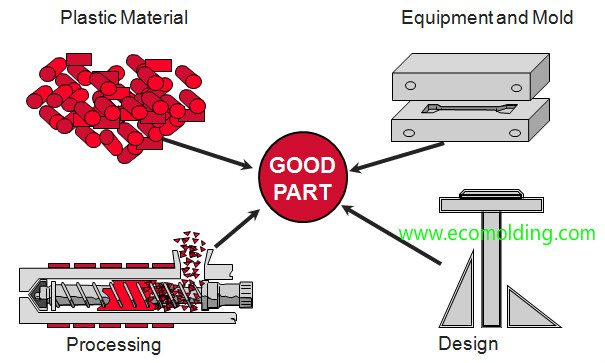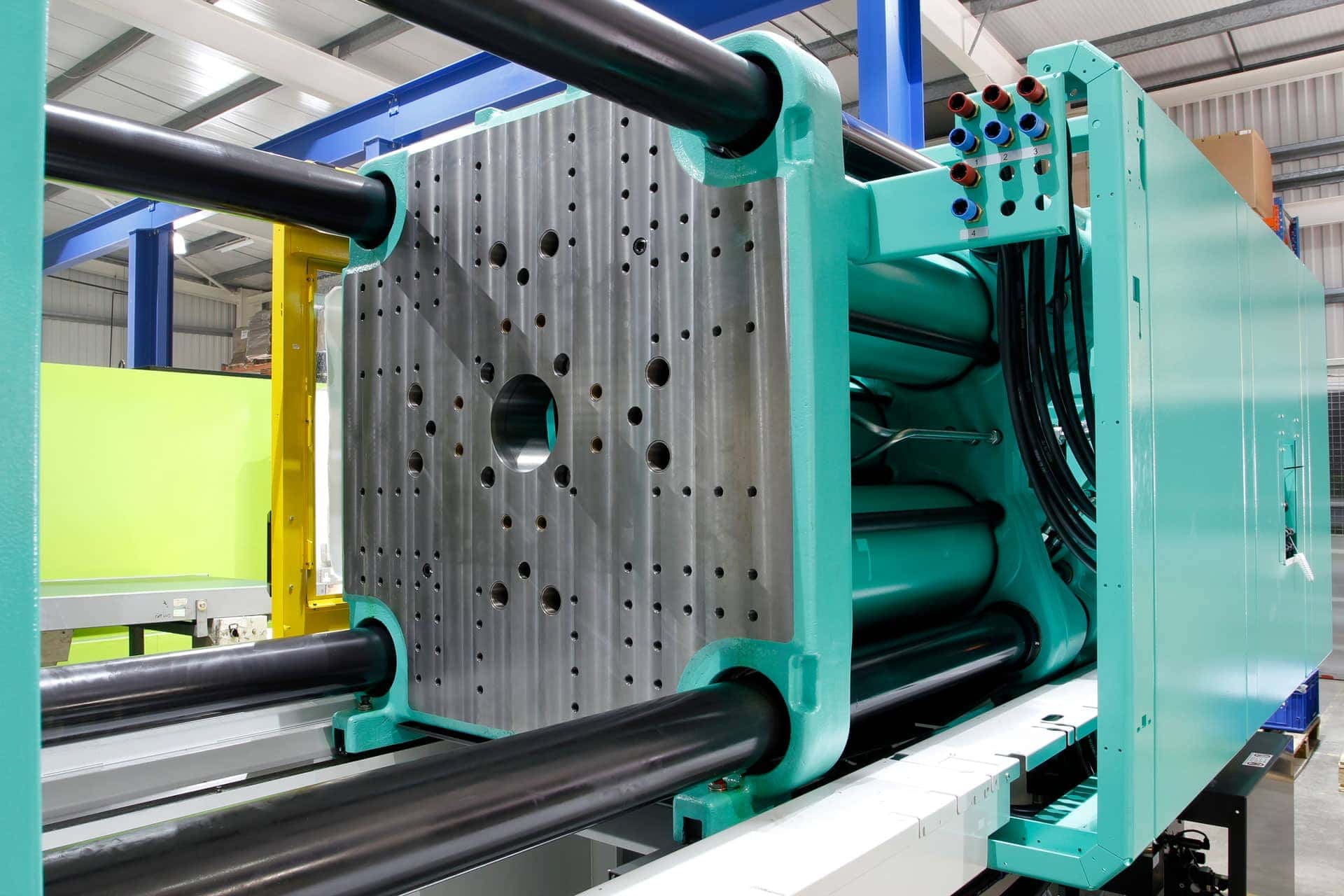Understanding the Essentials of Plastic Injection Molding Processes
Plastic injection molding functions as a keystone of modern-day manufacturing, offering a systematic strategy to creating intricate components with accuracy. This process not only encompasses the essential actions of melting and infusing materials into molds but additionally includes a nuanced understanding of various affecting variables, such as temperature level and stress. As markets increasingly demand effectiveness and quality, the details of this method become a lot more critical. Exploring these necessary components can reveal how even minor changes can result in considerable improvements in production end results, elevating questions about the possibility for technology in this well-known process.
What Is Plastic Injection Molding?
Plastic shot molding is an extensively used manufacturing procedure that changes thermosetting and polycarbonate materials into precise and intricate forms. This technique is preferred for its capability to produce high quantities of identical get rid of outstanding precision, making it an essential method in different industries, consisting of vehicle, consumer products, and clinical devices.
The process entails thawing the chosen plastic product and injecting it right into a mold and mildew under high pressure. The mold and mildew, created to the requirements of the desired part, permits the liquified plastic to take shape as it solidifies and cools down. When the product has actually set, the mold and mildew is opened, and the finished component is expelled.
Plastic injection molding uses a number of benefits, including minimized waste, uniformity in manufacturing, and the capability to integrate detailed layouts that might be challenging with various other making approaches. In addition, it sustains a wide variety of materials, each supplying distinct buildings that can be tailored for details applications. As industries proceed to introduce, plastic injection molding stays at the center, enabling the growth of innovative items that satisfy progressing customer demands.
The Injection Molding Process
The injection molding process is an innovative method that entails several essential stages to create top quality plastic elements. Plastic pellets are fed into a warmed barrel where they are thawed right into a thick fluid. This molten plastic is after that injected under high stress into a precision-engineered mold, which forms the product into the wanted kind.
Once the mold and mildew is filled, the plastic is permitted to solidify and cool down, taking the form of the mold and mildew cavity. Cooling time is crucial, as it affects the cycle time and the last properties of the molded component. After enough cooling, the mold and mildew opens, and the completed part is expelled using ejector pins.

Products Utilized in Injection Molding
Different materials can be used in the injection molding procedure, each offering distinct residential or commercial properties that deal with specific applications. The most commonly used materials include thermoplastics, thermosetting plastics, and elastomers.

Thermosetting plastics, like epoxy and phenolic resins, undertake a chemical change throughout the curing process, leading to a stiff, stringent structure. These products are optimal for applications requiring high warm resistance and structural honesty, typically used in electrical insulators and auto components.
Elastomers, consisting of silicone and rubber-based products, provide flexibility and resilience. Their unique homes make them ideal for applications that demand flexibility, such as seals and gaskets.
Additionally, specialized materials like bio-based plastics and composites are acquiring traction for their ecological benefits and enhanced efficiency qualities, broadening the range of injection molding applications in different industries. Recognizing the buildings of these materials is crucial for selecting the appropriate type for specific projects.
Advantages of Injection Molding
Shot molding stands apart as a highly reliable manufacturing procedure that supplies various benefits for generating intricate get rid of precision. One of one of the most considerable advantages is the capacity to develop complex styles that would be difficult or difficult to achieve with various other techniques (Plastic Injection Molding). The process enables comprehensive features and limited resistances, making sure top notch elements
Furthermore, shot molding is understood for its rapid production capabilities, making it a perfect option for high-volume production. When the mold is created, parts can be generated promptly, reducing lead times and raising overall productivity. This effectiveness not only reduces manufacturing prices but additionally gives an one-upmanship in the market.
The versatility of materials utilized in shot molding additionally enhances its appeal. A wide visit this site variety of thermoplastics and thermosetting polymers can be employed, enabling makers to select products that ideal satisfy their details requirements, including toughness, versatility, and warmth resistance.
In addition, the procedure reduces waste, as excess material can usually be recycled and reused. This sustainability facet contributes to a lowered ecological impact, making shot molding an accountable production option. Generally, the benefits of injection molding make it a recommended method for many industries.
Variables Influencing Product Quality
While many variables can affect item quality in injection molding, understanding these elements is crucial for accomplishing ideal outcomes. Key elements include product choice, refining specifications, and mold design.
Product option plays an essential duty, as various polymers display unique properties that impact flowability, stamina, and thermal security. company website Poor material choice can result in flaws such as warping or insufficient dental filling.
Processing specifications, consisting of temperature level, stress, and cycle time, need to be meticulously managed. Variations in these setups can lead to inconsistencies in part dimensions and surface coating. For instance, excessively high temperatures might create degradation of the polymer, while insufficient pressure can lead to brief shots.
Mold and mildew layout is similarly crucial, as it figures out the flow of the molten plastic and the cooling process. Poorly developed mold and mildews may lead to irregular cooling prices, leading to recurring stress and anxieties and dimensional mistakes.

Verdict
In final thought, plastic injection molding serves as an essential manufacturing procedure that allows the reliable manufacturing of premium elements. Mastery of the shot molding procedure, consisting of the understanding of products and the influence of numerous elements on item quality, is essential for attaining optimum outcomes. The advantages of this approach, such as cost-effectiveness and style versatility, more underscore its importance throughout several markets, strengthening its standing as a preferred selection for high-volume manufacturing.
Plastic shot molding offers as a cornerstone of modern production, supplying a systematic method to producing complex parts with precision.Plastic shot molding supplies several advantages, including decreased waste, uniformity in production, and the additional hints capacity to include complex styles that may be challenging with various other producing methods (Plastic Injection Molding). As markets proceed to innovate, plastic shot molding stays at the forefront, allowing the development of innovative products that meet developing consumer demands
The injection molding procedure is an innovative technique that entails a number of vital phases to create top quality plastic parts.In final thought, plastic shot molding serves as a vital manufacturing procedure that makes it possible for the reliable production of top notch components.